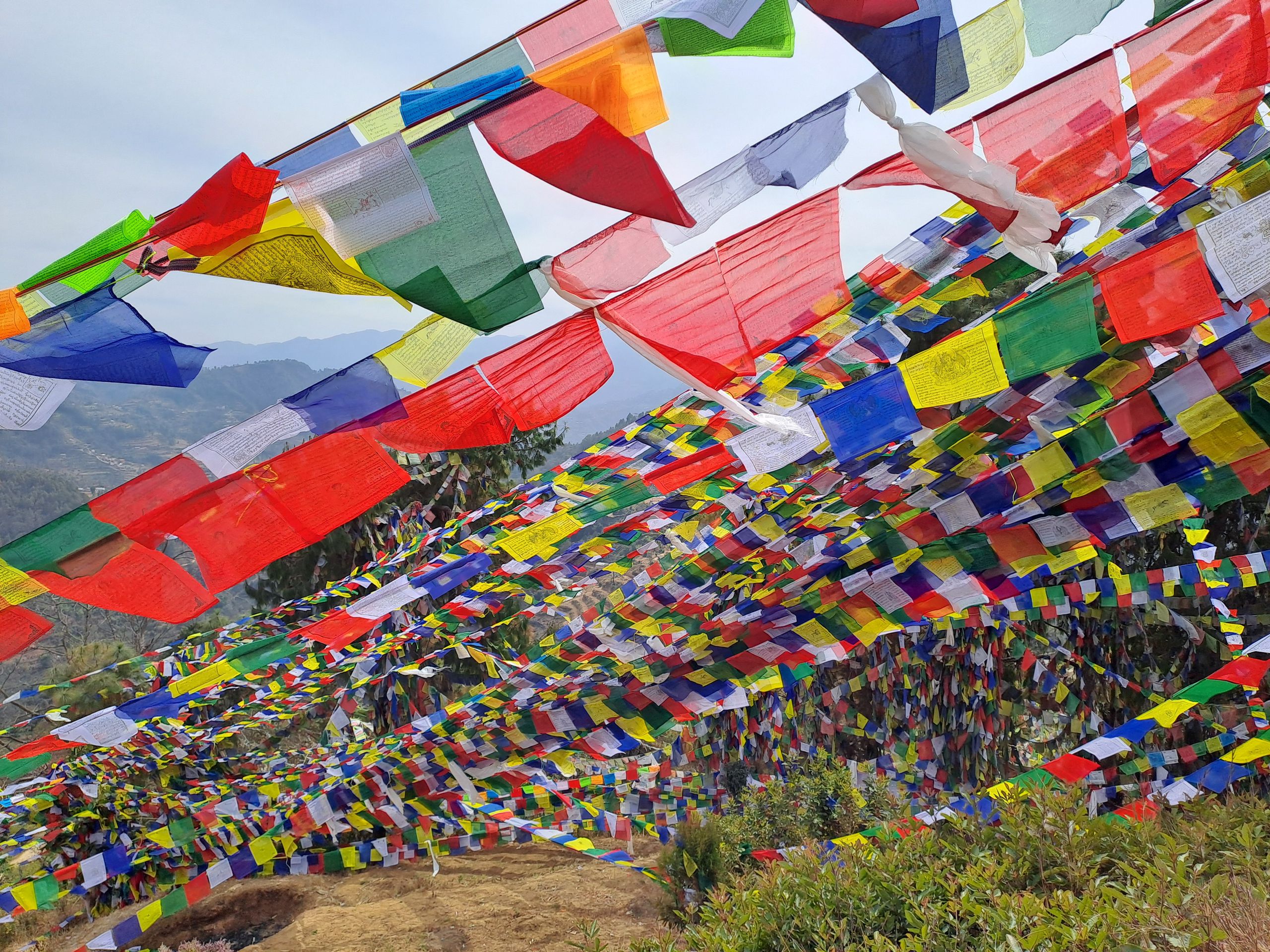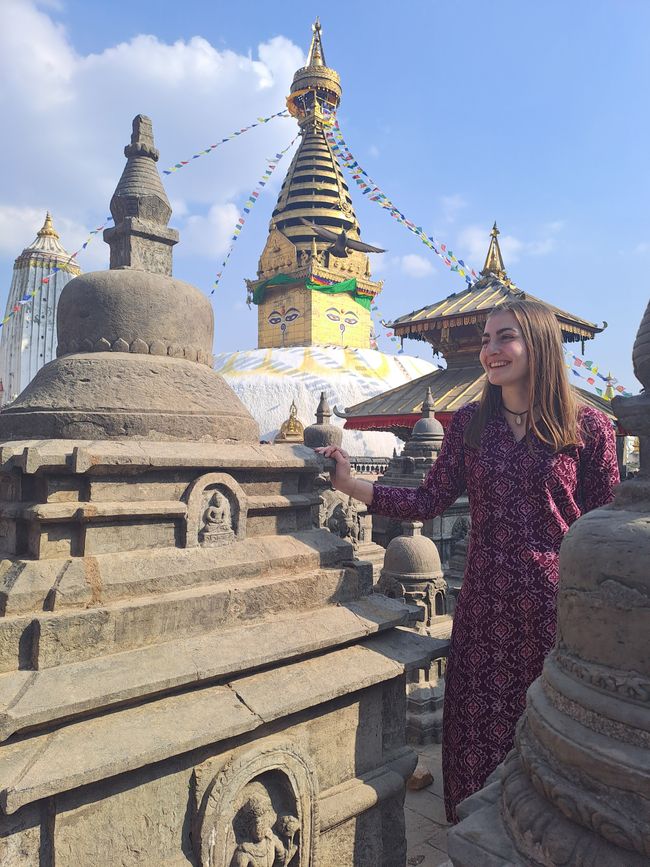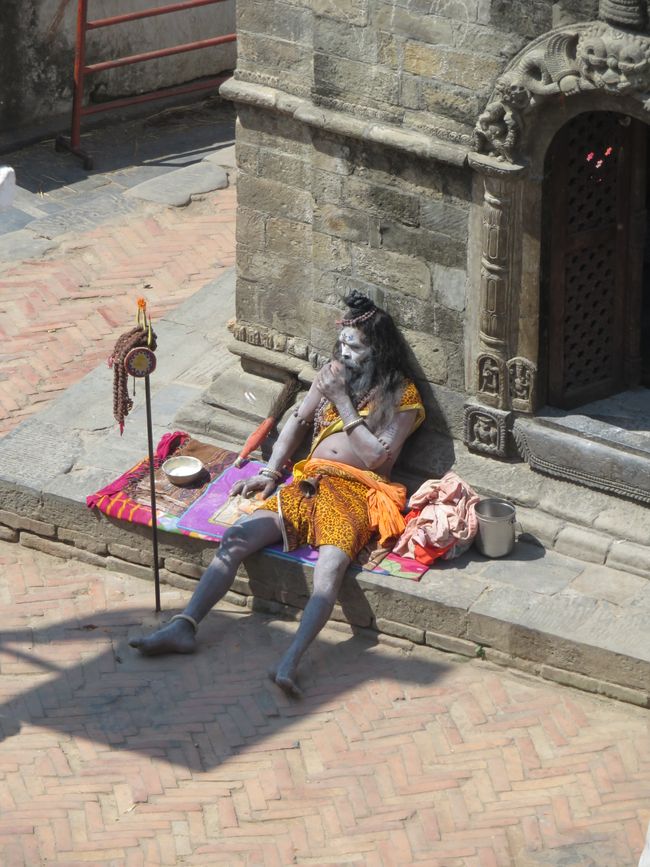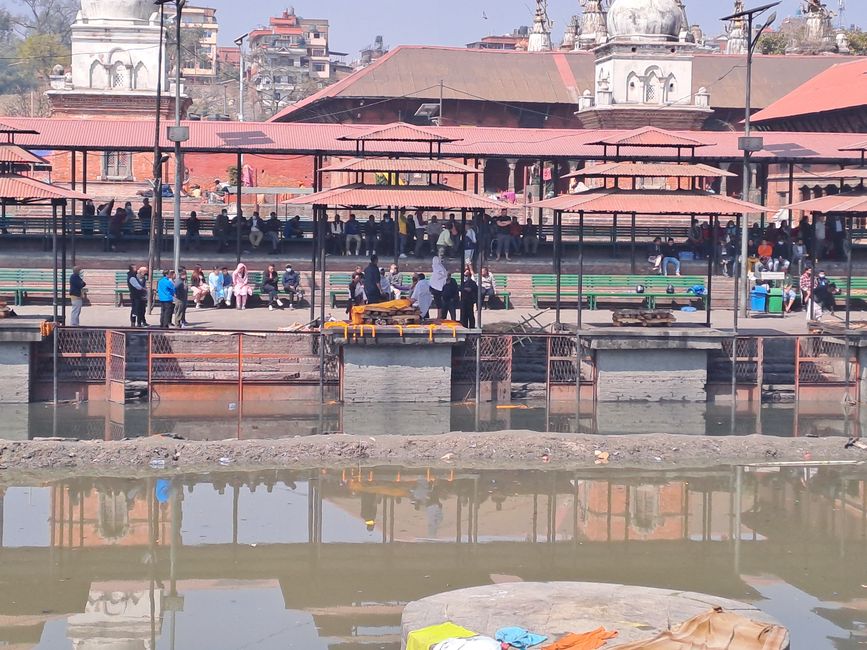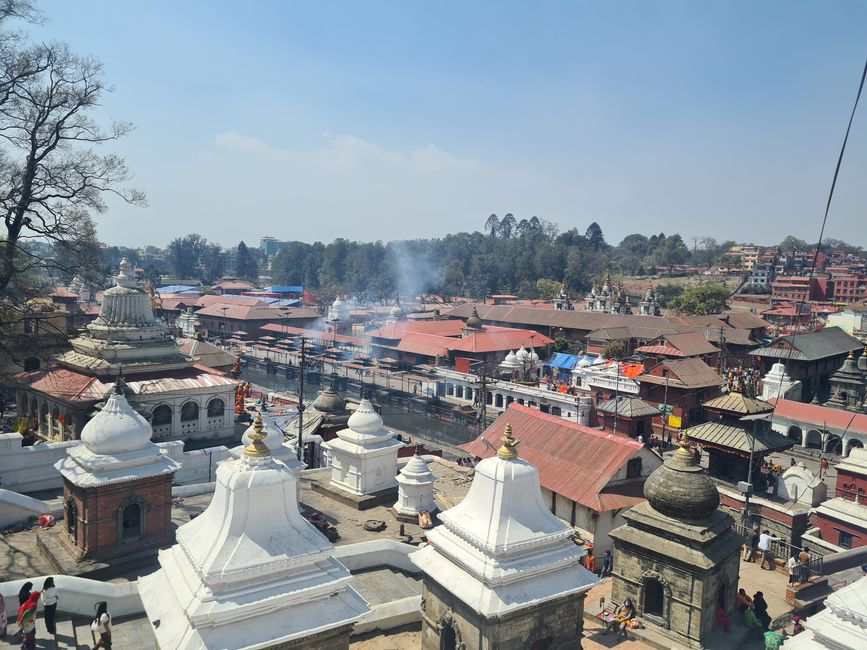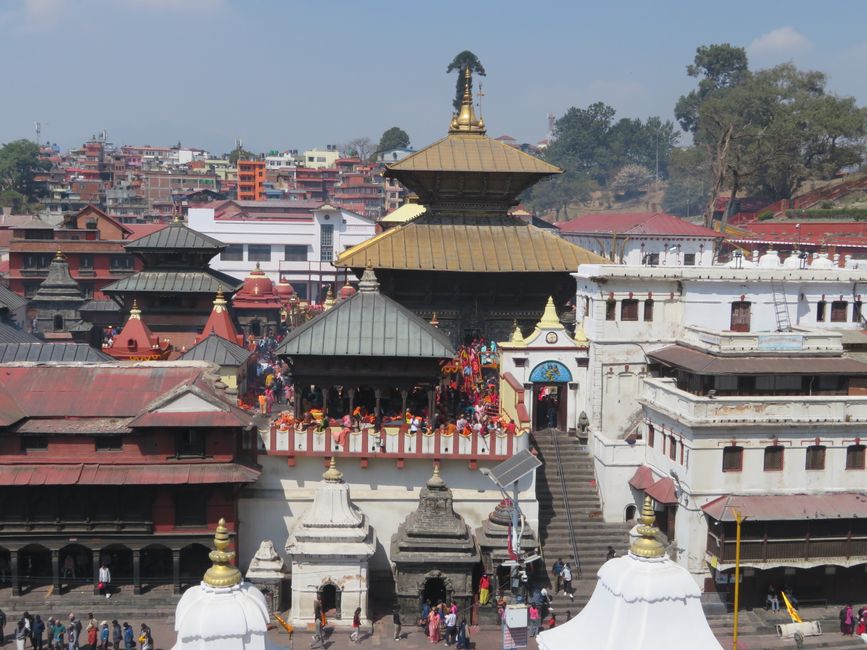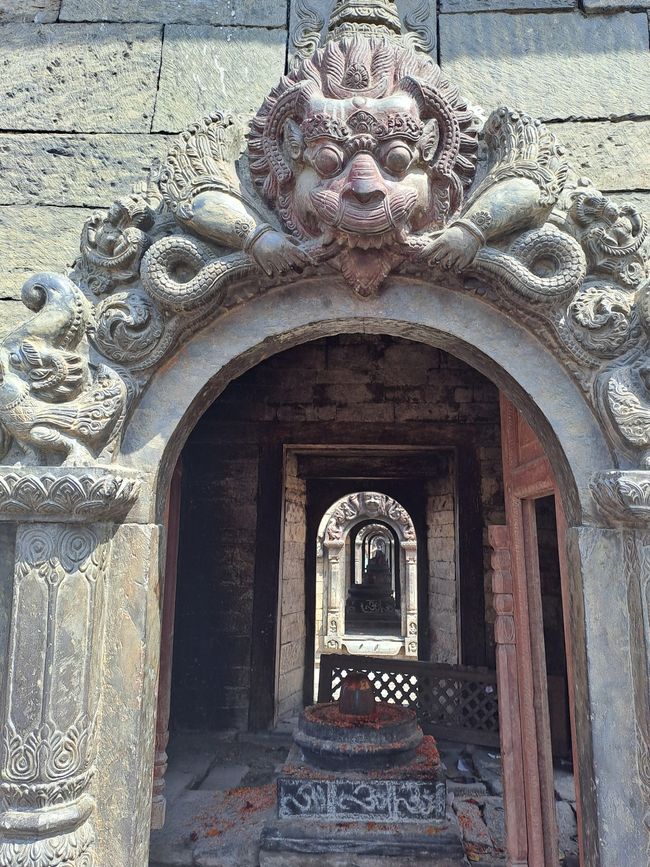Pashupatinath - important temple site of Hinduism
የታተመ: 30.03.2024
ለጋዜጣ ይመዝገቡ
The day after Shivaratri we also went to Pashupatinath. There was nowhere near as much going on as the day before. Nevertheless, the after-effects of Shivaratri were still noticeable and there were still some believers there to pray and make sacrifices.
As already mentioned, Pashupatinath is one of the most important temples in Hinduism. Therefore, it is the wish and goal of many Hindus to be cremated there. In fact, after we entered the extensive temple complex, we were able to observe exactly that:
First, the body was washed in the holy Bagmati River, which flows into the Indian Ganges and divides Pashupatinath into two large areas. The dead body was then wrapped in yellow cloth, carried to one of the cremation sites and laid on stacked wood. The eldest son of the deceased person then walked around the pyre five times in a clockwise direction. Wood and straw were then placed above the body. This was previously moistened in the Bagmati River so that the cremation process lasted longer. Finally, the eldest son set fire to the body, first near the head and then in other places. The relatives were dressed in white, as this is the color of mourning here. They remained present throughout the cremation process. At the end, the ashes were finally swept into the Bagmati River.
Pashupatinath is a very large temple complex, with many smaller and larger Shiva temples. The main temple, however, is only accessible to Hindus. From a distance, we could observe the believers making their sacrifices there.
There were also many sadhus in the temple complex at that time. These are men who have dedicated themselves to a religious, sometimes ascetic life. Nowadays, however, this vocation has become more of a profession, with which one can earn good money through donations and photographs.
During my time in Kuntabesi I had the traditional garment of Nepalese women, a kurta, made for me. I thought the day in Pashupatinath was a good time to wear my beautiful garment.
ለጋዜጣ ይመዝገቡ
መልስ
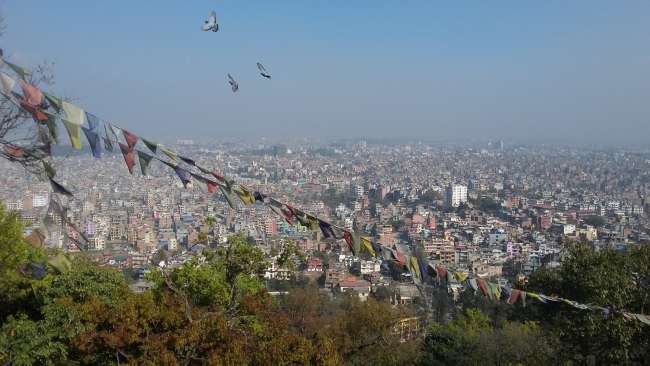
የጉዞ ሪፖርቶች ኔፓል
